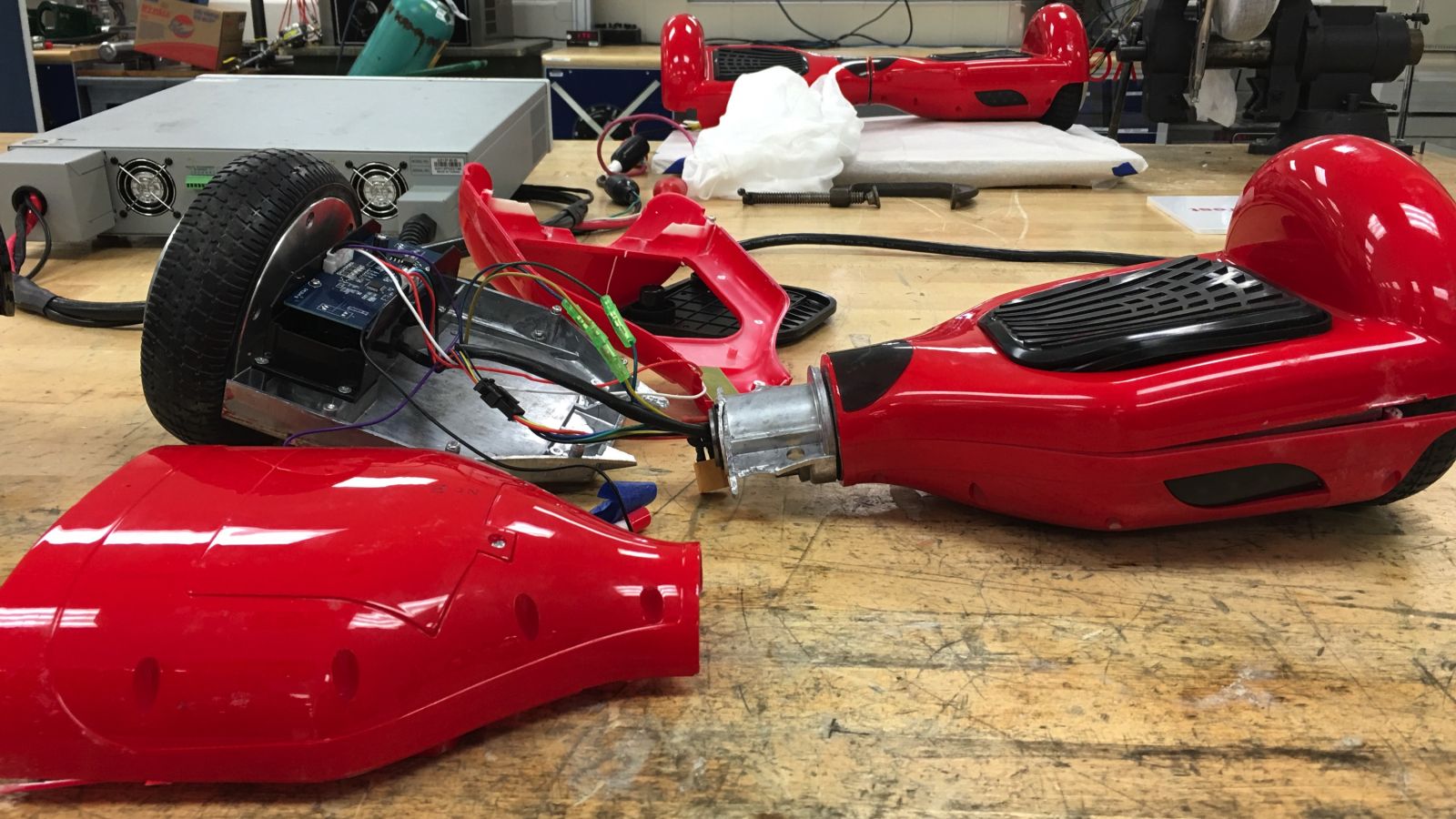
China’s fragmented, chaotic hoverboard industry is trying to clean itself up.
More than 100 Chinese hoverboard sellers, assemblers, and component supplies have banded together to form a trade association called the Hoverboard Industry Alliance. After forming officially in January, the group just held its second conference on Thursday (Mar. 3).
The group intends to work with organizations that set standards for safety and patents in the US, China, and elsewhere, one manufacturer member told Quartz. For example, manufacturers preparing to ship their devices to the US can turn to the association for guidance on how to apply for a UL certification, which most US retailers require before they will sell any electronic devices. Or, a manufacturer looking to make hoverboards could ask the association how to obtain a patent license for the device in China. Hangzhou-based manufacturer CHIC owns the intellectual property rights to the hoverboard in China, and it often leases the patent out to other factories in the country.
The group also intends to communicate regularly with UL and the Consumer Product Safety Commission (CPSC), a branch of the US government in charge of consumer goods safety, to help create and enforce standards for the industry.
At last Thursday’s meeting, the group discussed the process required to receive a UL 2722 certification—a standard created specifically for hoverboards. A representative from UL attended the meeting to explain the steps and meet with the organization’s members. A representative of the CPSC is set to meet with the organization this week.
China’s ultra-efficient, ultra-fragmented manufacturing sector helped drive the hoverboard’s popularity last year. After a set of viral videos with the device made the rounds on YouTube, hundreds of factories and sellers spent money making hoverboards and shipping them to the US and other countries. According to the Guangdong Testing Institute of Product Quality Supervision, a quality control organization that also works with the Hoverboard Industry Alliance, China has over 500 factories making hoverboards, about 300 of which are located in Shenzhen.
But this speed and efficiency came at a cost. In a rush to meet orders, some manufacturers and suppliers made shoddy products. After a string of fires that were set by exploding hoverboards, e-commerce vendors removed the product from shelves, and the US government effectively banned their sale.
Chinese hoverboard sellers and manufacturers are now feeling the after effects of those measures. Sales have plummeted, and many have been left with large inventories in the United States that they can’t get rid of. Industry players hope that by banding together they can retain better leverage with Amazon and other e-commerce sites, whom they feel have unfairly punished them.
The Hoverboard Industry Association has also begun collecting data about hoverboard sales. It estimates that in 2015 the industry exported more than 30 billion yuan (about $4.6 billion) worth.
But sales are unlikely to reach those heights this year. Making money on a newly popular gizmo was the easy part. Turning hundreds of manufacturers used to cut-throat competition into a reliable, organized supply chain will be harder.






